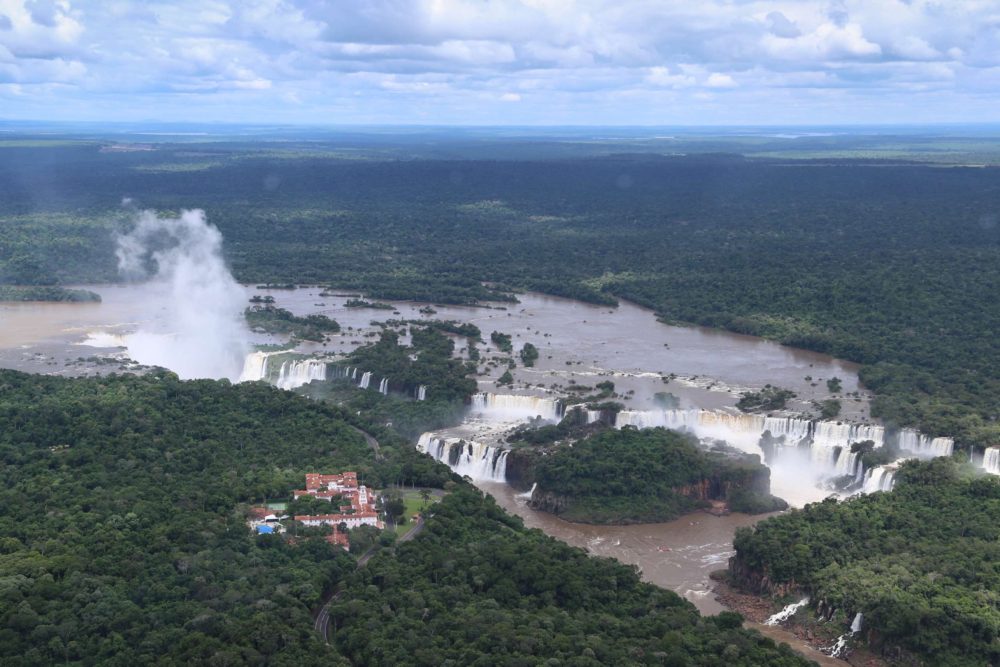When laws of nature cross paths with a happenstance of geology, in this case water, gravity, and topography, a waterfall results. The basic configuration is the same, but every waterfall is distinctive and beautiful in its own way. By many definitions, one of the most impressive and incredible waterfalls on the planet is Iguazu Falls, proudly claimed by both Argentina and Brazil.
A number of features make Iguazu Falls special. Probably the most breathtaking aspect is the portion known as the Devil’s Throat, a U-shaped formation at the beginning of the head of the falls approximately 490 feet wide and 2,300 feet in length. The amount of water and the overall drop means there is a perpetual cloud of mist, often rising above the level of the Iguazu River. The overall length of Iguazu Falls is another distinctive element, and with approximately 1.6 miles of length, Iguazu is more than a half-mile longer than Victoria Falls (1.06 miles), and more than twice the length of Niagara Falls.


